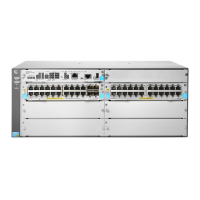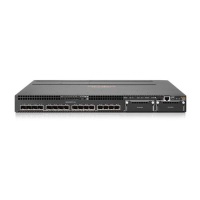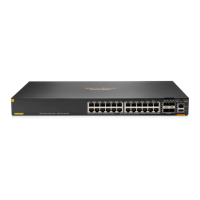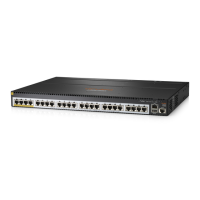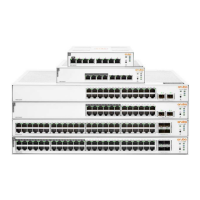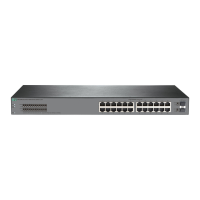Cabling and technology information | 74
may need to install one of these patch cords between the fiber-optic port in your switch and your
multimode fiber-optic network cabling, at both ends of the network link.
The patch cord consists of a short length of single mode fiber cable coupled to graded-index multimode
fiber cable on the transmit side, and only multimode cable on the receive side. The section of single
mode fiber is connected in such a way that it minimizes the effects of the differential mode delay in the
multimode cable.
Most of the time, if you are using good quality graded-index multimode fiber cable that adheres to the standards
listed in Cabling specifications, there should not be a need to use mode conditioning patch cords in your
network. This is especially true if the fiber runs in your network are relatively short.
For 10-Gigabit LRM using OM3 cable (50 μm multimode @ 1500/500 MHz*km), a mode conditioning patch cord is
not required. Other multimode cables may require mode conditioning patch cords to achieve the LRM maximum
distances.
Twisted-pair cable/connector pin-outs
Auto-MDIX Feature:
The 10/100/1000-T ports support the IEEE 802.3ab standard, which includes the “Auto MDI/MDI-X”
feature. In the default configuration, “Auto”, the ports on the switch will automatically detect the type of
port on the connected device and operate as either an MDI or MDI-X port, whichever is appropriate. So
for any connection, a straight-through twisted-pair cable can be used. You no longer have to use
crossover cables, although crossover cables can also be used for any of the connections.
If you connect a 6200 F/M switch twisted-pair port to another switch or hub, which typically have MDI-X
ports, the 6200 F/M port automatically operates as an MDI port. If you connect it to an end node, such
as a server or PC, which typically have MDI ports, the 6200 F/M switch port operates as an MDI-X port. In
all cases, you can use standard straight-through cables or crossover cables.
If you use a correctly-wired crossover cable, though, the switch will still be able to automatically detect
the MDI/MDI-X operation and link correctly to the connected device.
Other Wiring Rules:
n
All twisted-pair wires used for 10 Mbps, and 100 Mbps operation must be twisted through the entire
length of the cable. The wiring sequence must conform to EIA/TIA 568-B (not USOC). See “Pin
Assignments” later in this appendix for a listing of the signals used on each pin.
n
For 1000Base-T connections, all four pairs of wires in the cable must be available for data
transmission.
n
For 10 Mbps connections to the ports, you can use Category 3, 4, or 5 unshielded twisted-pair cable,
as supported by the IEEE 802.3 Type 10Base-T standard.
n
For 100 Mbps connections to the ports, use 100-ohm Category 5 UTP or STP cable only, as supported
by the IEEE 802.3u Type 100Base-TX standard.
n
For 1000 Mbps and SmartRate connections, 100-ohm Category 5e or better cabling is recommended.
Straight-through twisted-pair cable for 10 Mbps or 100 Mbps
network connections
Because of the Aruba Auto-MDIX operation of the 10/100 ports on the switch, for all network
connections, to PCs, servers or other end nodes, or to hubs or other switches, you can use straight-
through cables.
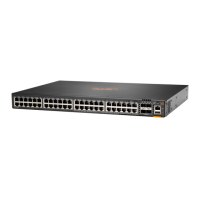
